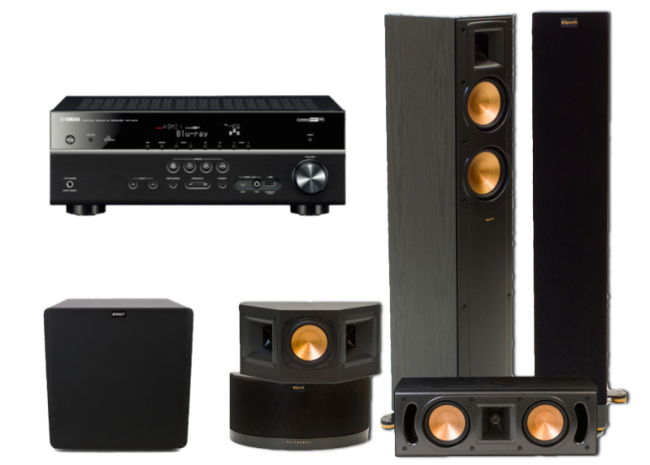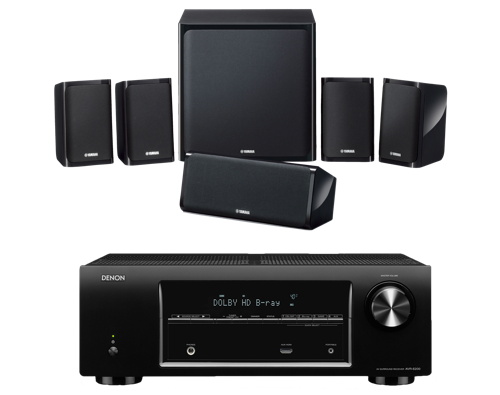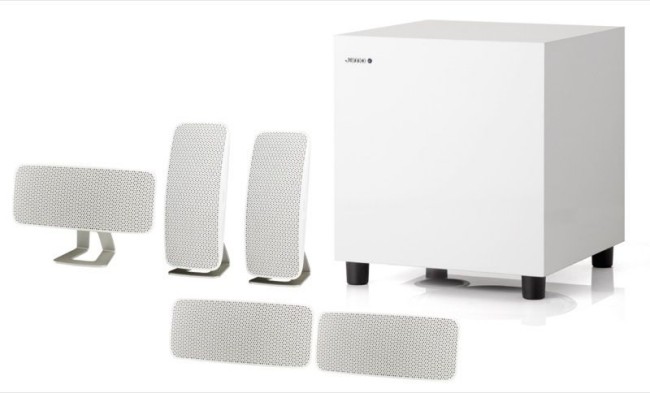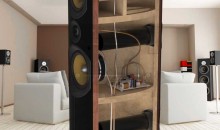Good Home Theater Speakers Don’t Have to Be Expensive
First of all, let me just get one thing straight—good home theater speakers can be expensive. But I believe you can also get satisfying sound no matter what your budget is…within reason. For this article, my point is to dissuade anyone who may be holding off indefinitely on purchasing home theater speakers simply because they can’t afford their favorite model. Let me fill you in on a few tips and, hopefully, by the end of this article you can get a vision of how to grow your home theater over time and start enjoying home theater right now. In fact, that’s my very first point.
There’s No Time Like the Present
Getting a set of good home theater speakers can start with your basic home theater in-a-box. Before you cast off that idea, think about one thing: Can you honestly say that those flat panel TV speakers are going to hold you over until you can acquire your dream system? I didn’t think so. Instead, consider upgrading your TV speakers or soundbar with a true 5.1 theater—even if it comes in a box ready to go. The sooner you start, the sooner you will be hooked on the wonder of surround sound (and the sooner the rest of your family will be excited about spending more down the road to make the home theater experience even better!)
When you start right away, look for a couple of key details:
Does the System Use a True 5.1 or 7.1 AV Receiver?
The point of starting small is having the ability to upgrade. Your home theater-in-a-box, in order to qualify for what I call a “starter” system, has to include a real AV receiver with speaker level outputs and a dedicated line level subwoofer output. There is no way around this particular rule. If you purchase a system where the amplifiers and power come from the bass module or subwoofer, you’re buying into a proprietary system that, no matter how inexpensive and feature-rich it may seem—cannot really be upgraded. If you have a true AV receiver as part of your home theater package, you can upgrade the speakers, the subwoofer, and eventually the very AV receiver itself. It’s independent of the speakers and there are no proprietary connections or concerns.

If you get a proprietary system with speaker connections on the subwoofer (even an expensive one), you lose much of your ability to upgrade down the road. This is because the subwoofer amplifiers are almost certainly tailored for the HTiB speakers, and would be severely underpowered for a set of traditional bookshelf or tower speakers.
Can You Move the Front Speakers to the Back?
In a system that uses 5 speakers and a subwoofer, the most “flexible” or adaptable speakers are the surrounds. Surround speakers don’t have to match your front speakers, let alone be manufactured by the same company. What’s great about that is that you can upgrade your main or front speakers first, then move your old main speakers to the back or side of the room as surrounds. You can really get good home theater speakers that will upgrade your listening experience to something far better than what you have, and then allow yourself some time downstream to make that system even more capable and powerful. Here’s a great example of a starter system that will give you room to grow:
And, though good home theaters speakers don’t need to be expensive, they should be able to fill the room you’re in. It does no good to use tiny satellite speakers in a 300 square foot space with 10 foot ceilings—at least not if you intend to play your movies and music at reference-levels. You’ll likely either incur distortion or cause damage to your speakers over time. In any case, the sound will not be what you expect or hope for. A great example of a small speaker system with a lot of headroom is the Jamo A 200 HCS 5 speaker system:
Of course, there are levels of “good” when it comes to home theater speakers. If you don’t want to start quite at the bottom, there are ways to give yourself a real leg up and then take your theater to places you only dreamed of. This can be done by purchasing a slightly better initial system and then working your way through upgrades of the main speakers, center channel, subwoofer, and AV receiver. In the end, you’ll experience very little downtime, and your system will always remain above par when it comes to films, music, and soundtracks.
Take this system for example:
 While the Klipsch RF-42 II Reference Speaker System package costs less than $1200, it gives you a tremendous platform from which to upgrade in the future. Far from a home theater in a box, this Klipsch Reference speaker system will give you audio you only dreamed of in theaters, but still leave you with the necessary components to truly grow your system into something even more amazing.
While the Klipsch RF-42 II Reference Speaker System package costs less than $1200, it gives you a tremendous platform from which to upgrade in the future. Far from a home theater in a box, this Klipsch Reference speaker system will give you audio you only dreamed of in theaters, but still leave you with the necessary components to truly grow your system into something even more amazing.
Whatever level you start at, good home theater speakers are—for most—more of a process than an immediate destination. We just want to encourage you to get started. Get a system together now so that you can catch the “upgraditis” that me and my friends have gone through for years. It’s worth it, and you’ll set yourself up for an ever-increasingly enjoyable journey into better home theater.








